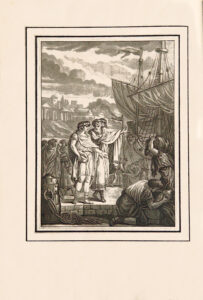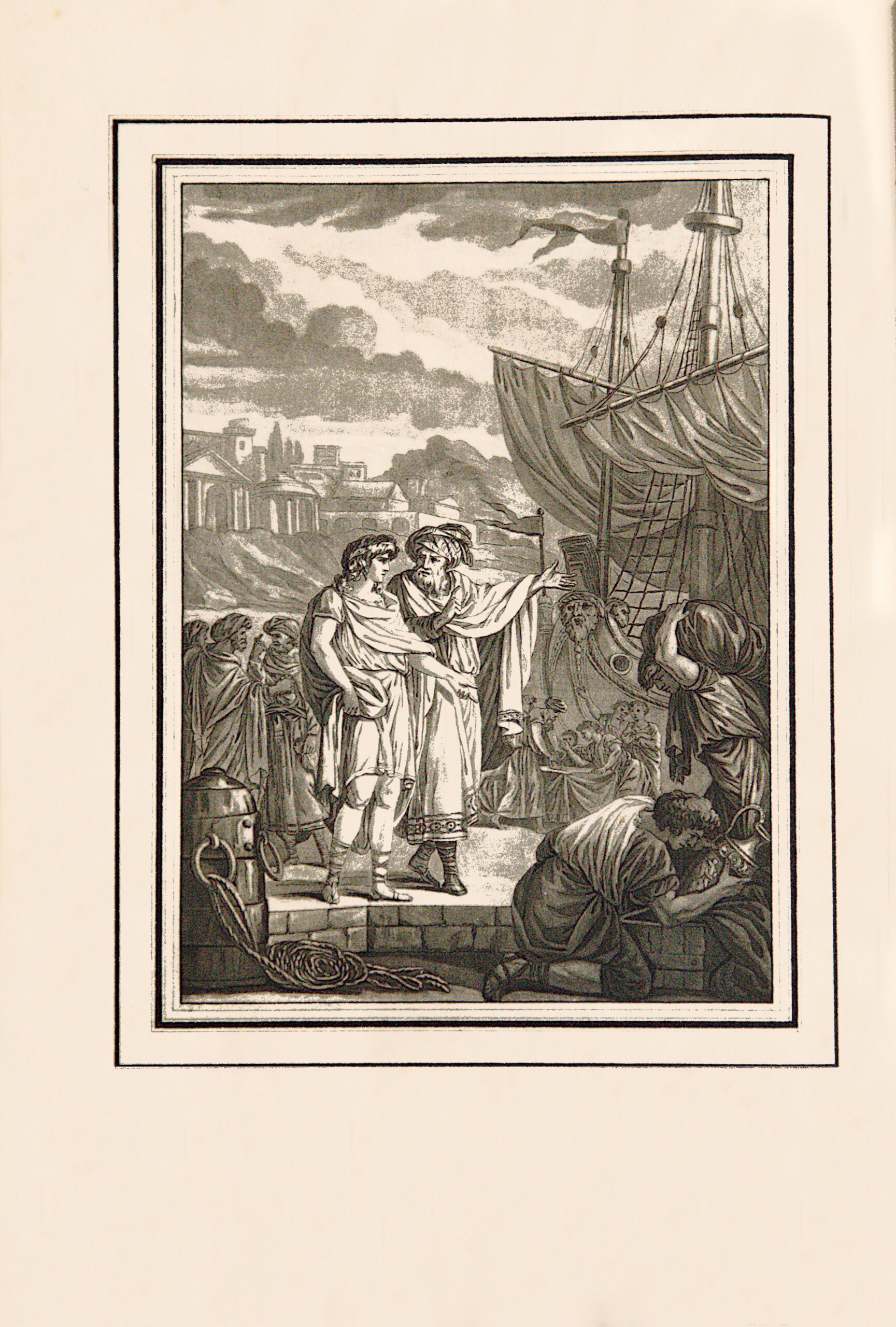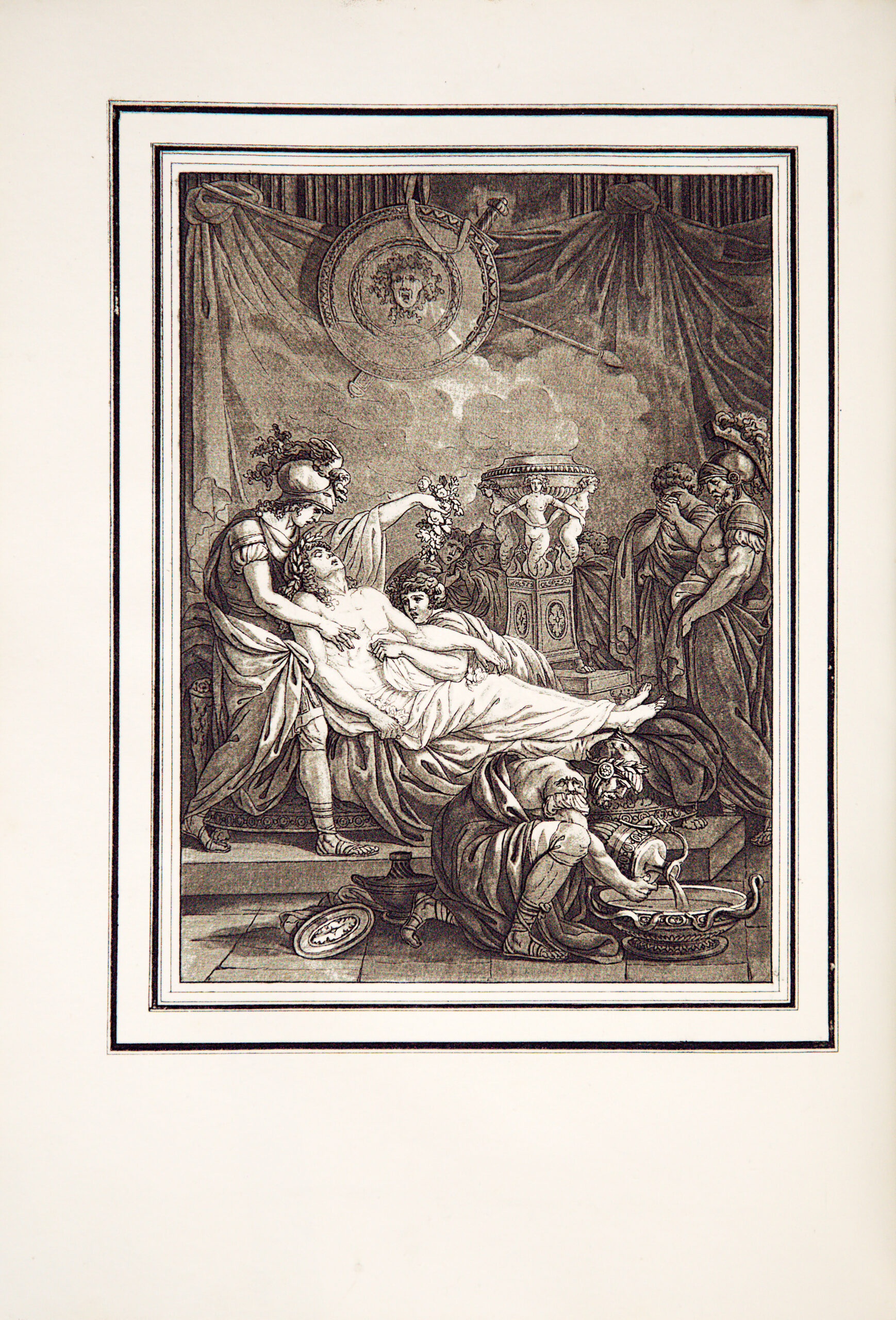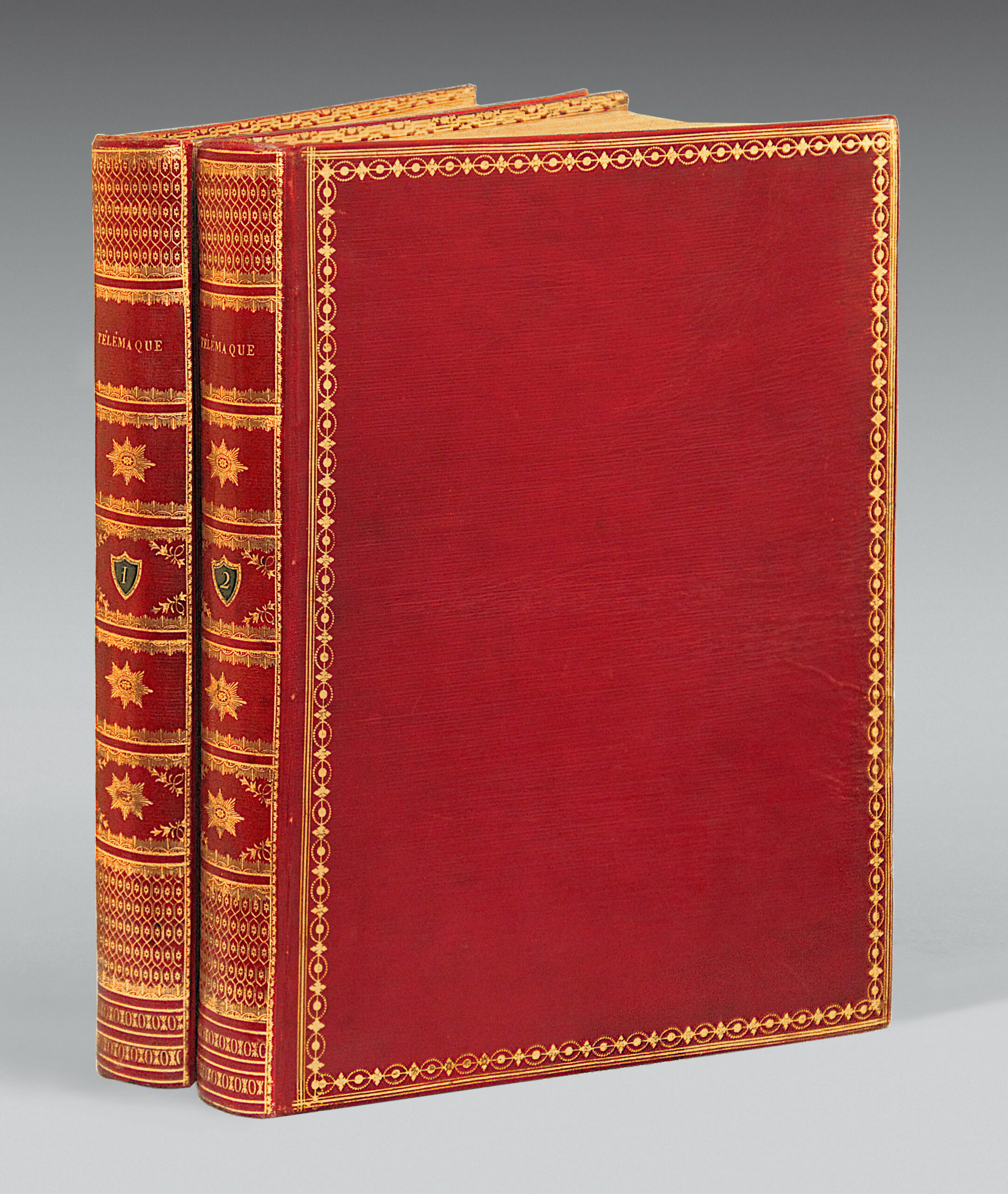Paris, De l’imprimerie de Monsieur, 1785.
2 large 4to volumes on vellum paper with : I/ (5) ll., 309 pp., 49 plates and 12 engraved titles; II/ (2) ll., 1 frontispiece, 297 pp., (1) l., 48 plates and 12 engraved titles. In all, 1 frontispiece engraved by Montulay, 72 engravings after Monnet engraved by Tilliard and 24 plates decorated with tailpieces containing the summaries. The titles bear Monsieur’s coat of arms, wood-engraved after Choffard.
Are also bound 24 superb prints engraved in wash by Moitte and Parisot.
Full straight-grained red morocco, triple gilt fillet and gilt border around the covers, richly decorated flat spines, gilt edges; inner gilt border. Contemporary binding.
324 x 237 mm.
Luxurious typographical edition on vellum paper, printed under the direction of Pierre-François Didot, with new typefaces from his foundry.
In the notice attached to some copies of this book, the publisher indicated that “the suite of figures by Monnet engraved by Tilliard not being printed on the same paper and the shade and grain of the paper being so opposite … they had others drawn by Moitte, engraved in wash by Parisot and printed on the same wove paper as the work.”
“It was as early as 1771 that Monnet created for the engraver Tilliard his beautiful illustration of Telemachus, whose drawings were exhibited in part at the Académie’s exhibition of the same year, and whose series of engravings were sold separately.
In January 1773, the Mercure de France announced the sale of these figures: “Aventures de Télémaque. 72 prints, 4to. The sieurs Monnet, king’s painter, and Tilliard, engraver, thought it necessary to combine their talents to present to the public the most interesting features, they propose to form a suite of prints executed in a new manner, and suitable to decorate the cabinets or to join the various editions that have been made of this work.”
Booksellers took advantage of the opportunity, as the following passage proves, to launch a new deluxe edition of Telemachus, into which these prints could easily be inserted: “As printing and engraving are two arts that belong together, and as amateurs may wish to include the actual text of Telemachus with the prints, the associated booksellers who have the privilege announce that they are planning to produce a 4to edition, in the same format, which they are confident will be as well executed, in terms of paper and typography, as the artists have been for the engraving, so that there will be nothing left to be desired in such an undertaking. The first suite, now being published, is of the greatest beauty; the drawings are perfectly composed and the engravings are made with great art, care and taste.” Baron Roger Portalis, Les dessinateurs d’illustrations au XVIIIe siècle.
The Adventures of Telemachus are a work of circumstance in every sense of the word. In 1689, Fénelon became tutor to the three sons of the Grand Dauphin. In particular, he had to look after the Duke of Burgundy, the most difficult of them all, who also happened to be the heir to the crown.
A precious and rare copy containing the two suites of illustrations, the one after Monnet engraved by Tilliard and the superb one by Moitte engraved in wash by Parisot, for a total of 121 prints, as well as an interesting autograph letter from Fénelon to the Marquis de Risbourg about Princess Christine de Salm, signed “Cambray, December 6, 1713”.
“Sir,
I am very flattered by the marks of confidence you are pleased to honor me with. I hope Madame la Marquise de Risbourg will respond to my good intentions. I have taken the liberty of writing according to yours and hers, but it takes a little time to calm the spirits – your prudence, your insinuations, and a procedure in accordance with the rules, which you undoubtedly know perfectly, will be able to ease the difficulties for Madame la princesse Christine de Salm, for many years I have had the honor of being known by her. She has always seemed to me fair, moderate, and of a very good spirit in the very thorny affairs she once had in Paris. So, Sir, I would appreciate it if you could come to a good conclusion if you could deal with her on the matter you have with her house. I have represented to her what the rules may require, and I think she is too enlightened to refuse to follow them. Nothing is more sincere than zeal, with which I am forever very perfectly.
Your most humble, and most obedient servant Duc de Cambray.
At Cambray, December 6, 1713.”
Fénelon’s letter, written two years before his death, the same year as Louis XIV’s, refers to the writer’s disillusioned end of life, politically blocked after the dispute over quietism in which he had confronted Bossuet and his network of friends; and above all, after the publication of Télémaque without his knowledge in 1699, which the king had perceived as a criticism of monarchical authority and whose printing he had suspended.
A fine copy with the suite of Parisot‘s washes engraved for a few copies of this edition.
From the libraries of M. Rosenbaum and Charles Hayoit with avec ex-libris.




